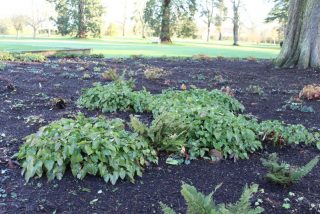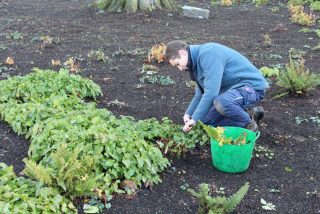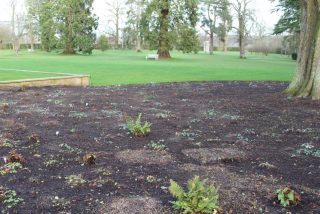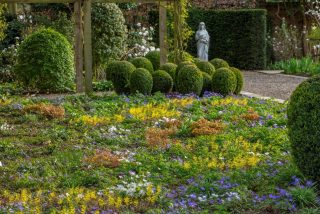Epimediums: The Secret Stars of Spring.
In these dark winter days, it is important to look forward to the first flowers of spring and the hope that they bring for what is to follow into the summer. Perhaps the most understated of all the spring flowers are Epimediums. This tough group of evergreen and deciduous perennials is more often associated with their leathery foliage and as one of the best groundcover choices for dry shade, but, if we look closely, it is one of the stars of the early spring garden.

There are around 50 different species of Epimedium that are found naturally in woodland, scrub, and shady, rocky places from the Mediterranean to Eastern Asia. In a garden situation, they grow well in moist, fertile, humus-rich soil with E. x versicolor tolerating full sun and slightly drier soils. Epimediums are members of the Berberis family (Berberidaceae) which may seem a little odd as it is more often associated with shrubs like Berberis and Mahonia, but it is not until we look closely at the flowers that the similarities become more apparent.

All Epimediums produce racemes of small, saucer or cup-shaped flowers in a variety of different colours from white to yellows and reds to pinks and purples. All Epimediums have underground stems or rhizomes and the flowers emerge from buds between the leaves and the underground stem at ground level from spring into early summer.
Often given the common name “Barrenwort” because of the belief that the root could prevent women from becoming pregnant, Epimediums can also provide interest through their foliage which is often heart-shaped with spiny margins, has excellent autumn colour, and can sometimes be bronze-tinted in spring. The foliage of Epimedium x versicolor ‘Cupreum’ emerges in spring a coppery red-brown colour and fades to rich mahogany in autumn making it one of the best choices for ground cover planting under trees and shrubs.

Here at Morton Hall, we grow 13 different cultivars throughout the garden with the majority grown under our majestic Chestnut tree on the East Terrace.

After all the chestnut leaves had fallen and been cleared away in late autumn, we mulched under the chestnut tree to ameliorate the removal of the natural leaf litter. We also gave our Epimediums a feed with a small handful of fish blood and bone to give them some extra encouragement to form plenty of flower buds! For the best flower display in spring, both evergreen and deciduous Epimediums, except for E. perralderianum, benefit from the foliage being cut back before the flower spikes form, and in early December, we spent a day going around the garden doing just that. It was important that we did this before the flower spikes started to emerge and we therefore kept a watchful eye on our Epimediums as leaving them too late could have resulted in hours of painstaking work removing individual leaves to avoid cutting the already emerged flower spikes!
